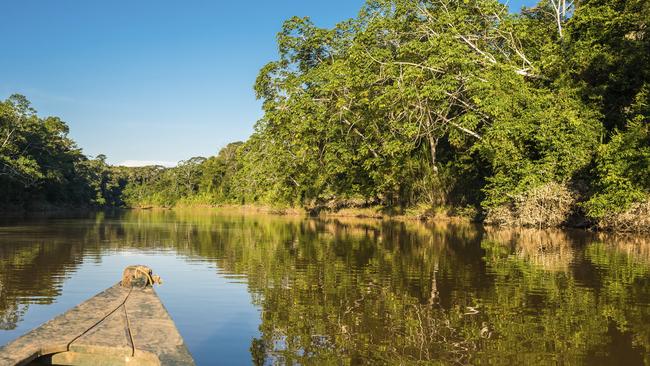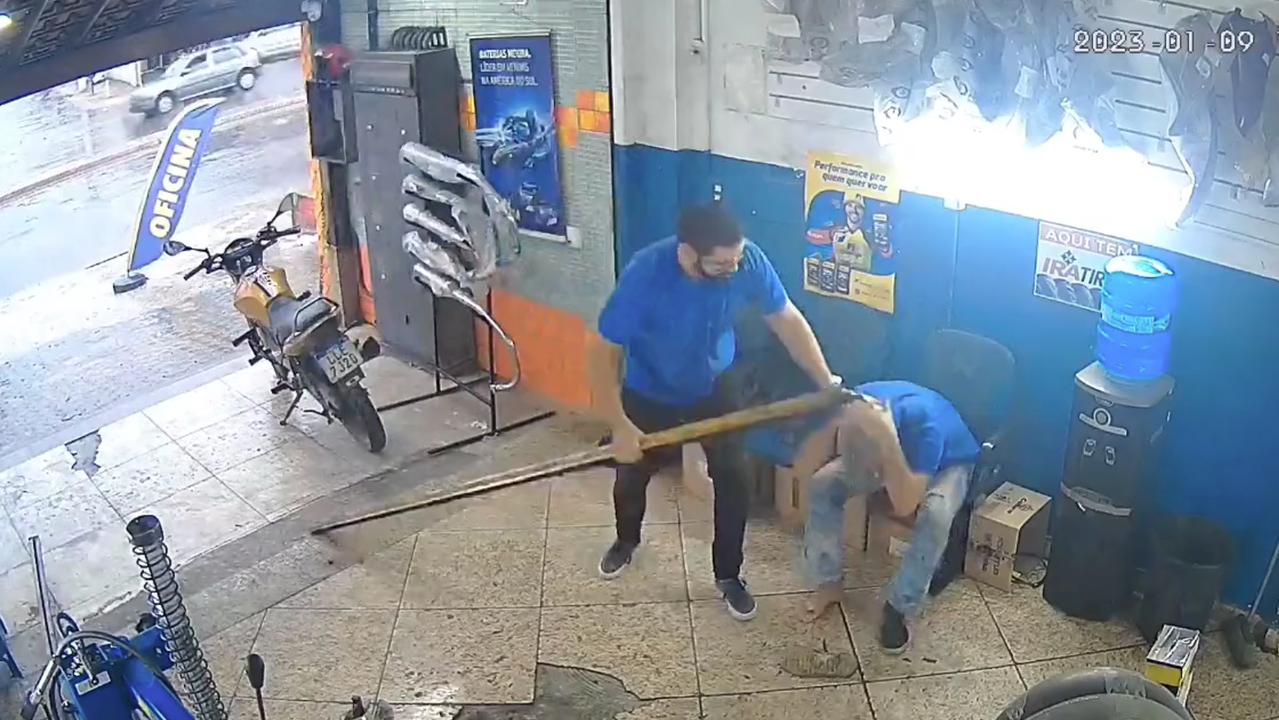Peru’s Mashco-Piru tribe are one of the last isolated peoples on Earth
WEARING just loincloths, one of the last isolated peoples on Earth are making contact with the outside world for the first time but the encounters are far from friendly.

DRESSED in loincloths and speaking an unknown language, the Mashco-Piro, one of the last isolated peoples on Earth, are increasingly venturing out of their forests in Peru — to the government’s distress.
Authorities say encroachments on the Amazon rainforest by illegal loggers may be forcing the Mashco-Piro, a tribe of hunter-gatherers, into some of their first recorded contacts with the outside world. Often the meetings seem friendly enough: Residents of the surrounding area give the Mashco-Piro food, and tourists give them clothing. But the encounters can also turn violent. In December, Peruvian authorities evacuated two small villages after some 200 Mashco-Piro attacked them with bows and arrows, killing residents’ livestock and pets and carting off food, pots, pans, machetes and rope. In 2010, the Mashco-Piro were accused of wounding a teenager with a spear, and in 2012 of killing a local guide with a bamboo-tipped arrow. Peru’s culture ministry has voiced concern the encounters could be deadly for the Mashco-Piro, too. Even a seemingly benign gift of clothing has the potential to decimate a people whose immune systems have never been exposed to the diseases of the world beyond their forests. “They can be very vulnerable to germs carried by others,” said Lorena Prieto, head of the Peruvian culture ministry’s isolated indigenous peoples unit. The tribe of some 800 people also known as the Cujareno lives in the Madre de Dios reserve along the Brazilian border in southern Peru. Illegal logging and gold mining have destroyed an estimated 55,000 hectares (136,000 acres) of forest in the region, which has the highest output of illegally mined gold in Peru — the largest gold producer in Latin America and fifth-largest in the world. The Madre de Dios region is home to around 4,000 indigenous people, including two other isolated groups: about 150 Machiguengas and about 300 Nahuas, according to the culture ministry. The Mashco-Piro sometimes act aggressively toward other indigenous groups when they realise they do not speak their language or see animals they are unfamiliar with, such as dogs. — Language barrier — After the December attack on the villages of Monte Salvado and Puerto Nuevo, the indigenous peoples’ federation for the Madre de Dios reserve (FENAMAD) said the Mashco-Piro invasion was “an act of desperation” caused by illegal loggers and drug traffickers invading their land. FENAMAD also condemned tourist visits to the reserve. Prieto said the Peruvian government wants to understand why the Mashco-Piro are increasingly venturing into the outside world after actively avoiding contact for centuries. “It’s possible they’re leaving their territory because of illegal loggers and their attacks, or because new non-isolated indigenous communities are settling around the reserve,” she told AFP. The government wants to know “why they are leaving the reserve, and if there are sick or wounded whom we need to help,” she said. The problem is understanding the Mashco-Piro. Their language is unknown to the outside world. The government is searching for an interpreter among the Yine tribe, who can understand a little of the Mashco-Piros’ language. They are also searching in Brazil, home to other Mashco-Piro groups, in the hope that one of them may have picked up another language. But Prieto insisted that the government will not force any encounters with the Mashco-Piro. “Isolated indigenous peoples have rights protected by the United Nations, including the right to decide to live in isolation, which the state must respect and protect,” she said.



